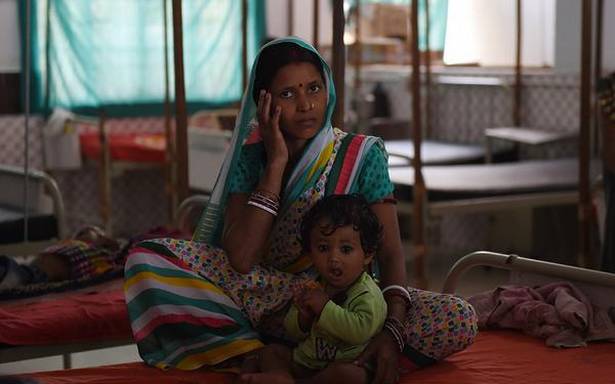Gujarat had the highest share of children (79.7%) aged 6-59 months who were anaemic while Kerala was the only State where the share was less than 40%
The progress made in reducing the prevalence of anaemia among children between 2005 and 2015 has been derailed as a higher proportion of children aged 6-59 months have been found to be anaemic in India, according to the National Family Health Survey-5 (2019-21) compared to NFHS-4 (2015- 16). In 30 out of the 36 States/UTs, over half the children in the age group were found to be anaemic in 2019-20. More worryingly, the proportion of anaemic children increased in 29 States/ UTs in NFHS-5 compared to NFHS-4. A relatively higher share of children were found to be anaemic in several northern and western States in rural and urban areas.
Prevalence of anaemia
The share of anaemic children aged 6-59 months in NFHS-5 (2019-21) increased by 8.5% points compared to NFHS-4 (2015-16) and was closer to levels recorded in NFHS-3 (2005-06).
Chart appears incomplete? Click to remove AMP mode
Urban and rural
The chart plots the share of anaemic children in rural areas of a State/UT in NFHS5 against the share of such children in urban areas. The States in the shaded region had a relatively high prevalence of anaemia among children in rural and urban areas. More than 60% of children were anaemic in rural and urban areas.
State-wise prevalence
The map shows the State-wise percentage of children aged 6-59 months who were anaemic, according to NFHS-5. The share of anaemic children was more than 70% in nine out of the 36 States/UTs. Kerala was the only State where the share was less than 40%. Gujarat had the highest share of children (79.7%) aged 6-59 months who were anaemic in NFHS-5.
Change from NFHS-4
The map shows the State-wise change in the share of children aged 6-59 months who were anaemic in NFHS-5 compared to NFHS-4. Assam, Mizoram and Chhattisgarh recorded the highest increases. The share of anaemic children fell in only four States. Among the major States, Chhattisgarh recorded the highest increase in the share of anaemic children in NFHS-5 compared to NFHS-4.
Source: Read Full Article

